BATIK - UNTUK JUALAN DAN TEMPAHAN
INFO TERKINI....!!!
- Jualan Batik secara Borong & Runcit
- Pelbagai corak dan rekaan SONGKET dari harga RM50.00 hingga ribuan ringgit
- Keluaran terbaru - BATIK DIGITAL
- Sedia menerima tempahan uniform dan baju rasmi untuk Jabatan Kerajaan & Swasta
- Pakaian Ready Made
- Rekaan manik-manik yang eksklusif
- Pilihan produk Ready Made :
- KURUNG MODEN
- JUBAH
- PARCO
- SUTERA DESIGN - MONTAJ, FLORA & FAUNA
- Batik Digital ( lukisan tangan )
- Pelbagai corak-corak ABSTRAK yang menarik
BATIK
e_batik4@yahoo.com
Order for long and short sleeve, uniform, traditional malay baju kurung, and any kind of dresses batik design from Kelantan Malaysia.. Please email to us....
e_batik4@yahoo.com
BATIK 1 MALAYSIA
1
2
3
4
5 - SONGKET/ KAIN SEPASANG
6
7
8
9
10 - BAJU KEMEJA
11
12
13

14
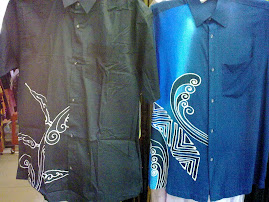
GELANG MUTIARA
SILA EMAIL KEPADA KAMI....
e_batik4@yahoo.com
Want to order pearl bacelet or necklace?
please email to...
e_batik4@yahoo.com
(A) (1) GELANG MUTIARA
GELANG MUTIARA SABAH HITAM AIR TAWAR BERKATUP
KOD 001A
RM 402)
GELANG MUTIARA SABAH PUTIH AIR TAWAR BERKATUP
KOD 001B
RM 40
3)
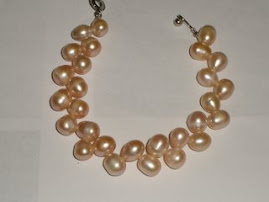
GELANG MUTIARA PADI
KOD 002A
RM 204)
GELANG MUTIARA GRED ASLI POTATOB
KOD 003A
RM 20
5)
GELANG MUTIARA 3 LINE
KOD 004A
RM 30
6)
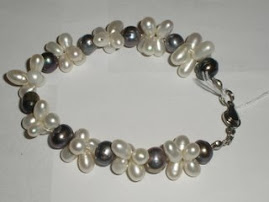
GELANG MUTIARA SABAH BERBUNGA
KOD 005A
RM 42
7)
GELANG ULAT BULU + MUTIARA (AIR MASIN) POTATO HALUS
KOD 006A
RM 28
8)
GELANG MUTIARA JAGUNG GRED C
KOD 007A
RM 20
9)
GELANG MUTIARA SABAH BERSALUT
KOD 007A
RM 27(B) (1) GELANG MUTIARA + KRISTAL
GELANG MUTIARA SABAH + KRISTAL BERKATUP
KOD 001MK
RM 232)
GELANG MUTIARA SABAH 1 LINE
KOD 002MK
RM 22
3)
GELANG KRISTAL + MUTIARA BERKATUP
KOD 003MK
RM 30
4)
GELANG KRISTAL MUTIARA PADI
KOD 004MK
RM 30
5)
GELANG MUTIARA HALUS/KRISTAL BERBUNGA
KOD 005MK
6)
GELANG RAMA-RAMA MUTIARA
KOD 006MK
RM 25
7)
GELANG KRISTAL + MUTIARA PADI LONJONG
KOD 007MK
RM 30
8)
GELANG CAT EYES MUTIARA
KOD 008MK
RM 35(C) (1) SENARAI PEMBELIAN SET RANTAI MUTIARA
RANTAI MUTIARA POTATO TIGER EYES, GELANG KRISTAL TIGER EYES,
CINCIN + KERONGSANG TIGER EYES
KOD 001STM
RM 150
2)
RANTAI MUTIARA SABAH + GELANG MUTIARA SABAH LOKET LOVE
KOD 002STM
RM 100
3)
RANTAI LABUH MUTIARA ASLI (PANJANG 80CM) + GELANG MUTIARA ASLI
KOD 003STM
RM 75
4)
RANTAI LENGKAP POTATO (RANTAI, GELANG, KERONGSANG DAN CINCIN)
KOD 004STM
RM 150
5)
RANTAI MUTIARA PATATO BUNGA TANJUNG + GELANG 1 LINE
KOD 005STM
RM 90
6)
RANTAI MUTIARA POTATO BUNGA TANJUNG + GELANG 2 LINE
KOD 006STM
RM 100
Thursday, January 7, 2010
About Batik Designs
Although there are thousands of different batik designs, particular designs have traditionally been associated with traditional festivals and specific religious ceremonies. Previously, it was thought that certain cloth had mystical powers to ward off ill fortune, while other pieces could bring good luck.
Certain batik designs are reserved for brides and bridegrooms as well as their families. Other designs are reserved for the Sultan and his family or their attendants. A person's rank could be determined by the pattern of the batik he/she wore.
In general, there are two categories of batik design: geometric motifs (which tend to be the earlier designs) and free form designs, which are based on stylized patterns of natural forms or imitations of a woven texture. Nitik is the most famous design illustrating this effect.
Certain areas are known for a predominance of certain designs. Central Javanese designs are influenced by traditional patterns and colors. Batik from the north coast of Java, near Pekalongan and Cirebon, have been greatly influenced by Chinese culture and effect brighter colors and more intricate flower and cloud designs.
High fashion designs drawn on silk are very popular with wealthy Indonesians. These exceptionally high-quality pieces can take months to create and costs hundreds of dollars.
Kawung
Kawung is another very old design consisting of intersecting circles, known in Java since at least the thirteenth century. This design has appeared carved into the walls of many temples throughout Java such as Prambanan near Jogjakarta and Kediri in East Java. For many years, this pattern was reserved for the royal court of the Sultan of Jogjakarta. The circles are sometimes embellished inside with two or more small crosses or other ornaments such as intersecting lines or dots. It has been suggested that the ovals might represent flora such as the fruit of the kapok (silk cotton) tree or the aren (sugar palm).
Ceplok
Ceplok is a general name for a whole series of geometric designs based on squares, rhombs, circles, stars, etc. Although fundamentally geometric, ceplok can also represent abstractions and stylization of flowers, buds, seeds and even animals. Variations in color intensity can create illusions of depth and the overall effect is not unlike medallion patterns seen on Turkish tribal rugs. The Indonesian population is largely Muslim, a religion that forbids the portrayal of animal and human forms in a realistic manner. To get around this prohibition, the batik worker does not attempt to express this matter in a realistic form. A single element of the form is chosen and then that element is repeated again and again in the pattern.
Parang
Parang was once used exclusively by the royal courts of Central Java. It has several suggested meanings such as 'rugged rock', 'knife pattern' or 'broken blade'. The Parang design consists of slanting rows of thick knife-like segments running in parallel diagonal bands. Parang usually alternated with narrower bands in a darker contrasting color. These darker bands contain another design element, a line of lozenge-shaped motifs call mlinjon. There are many variations of this basic striped pattern with its elegant sweeping lines, with over forty parang designs recorded. The most famous is the 'Parang Rusak' which in its most classical form consisting of rows of softly folded parang. This motif also appears in media other than batik, including woodcarving and as ornamentation on gamelan musical instruments.
Washing Batik
Harsh chemical detergents, dryers and drying of fabrics in the sun may fade the colors in batik. Traditionally dyed batiks should be washed in soap for sensitive fabrics, such as Woolite, Silky or Halus. Fine batik in Indonesia is washed with the lerak fruit which can be purchased at most traditional markets. A bottled version of this detergent is also available at batik stores. Be sure to line dry batik in a shady area and not in direct sunlight.
Modern Batik
Modern batik, although having strong ties to traditional batik, utilizes linear treatment of leaves, flowers and birds. These batiks tend to be more dependent on the dictates of the designer rather than the stiff guidelines that have guided traditional craftsmen. This is also apparent in the use of color that modern designers use. Artisans are no longer dependent on traditional (natural) dyes, as chemical dyes can produce any color that they wish to achieve. Modern batik still utilizes canting and cap to create intricate designs.
Fashion designers such as Iwan Tirta have aggressively introduced batik into the world fashion scene. They have done much to promote the Indonesian art of batik dress, in its traditional and modern forms.
The horizon of batik is continuing to widen. While the design process has remained basically the same over the last century, the process shows great progress in recent decades. Traditionally, batik was sold in 2 1/4 meter lengths used for kain panjang or sarong in traditional dress. Now, not only is batik used as a material to clothe the human body, its uses also include furnishing fabrics, heavy canvas wall hangings, tablecloths and household accessories. Batik techniques are used by famous artists to create batik paintings which grace many homes and offices.
Fine quality handmade batik is very expensive and the production of such works is very limited. However, in a world that is dominated by machines there is an increasing interest in materials that have been handmade. Batik is one of these materials.
During your stay in Indonesia, take advantage of your time here to learn more about the fascinating world of batik. Have a batik dress or men's business shirt made for you by a seamstress or tailor. Visit batik factories in Jogjakarta, Surakarta or Pekalongan to see for yourself how the intricate process is conducted or ask questions of batik artisans giving demonstrations in stores such as Sarinah or Pasaraya in Jakarta. You will come away with sense of wonder over the time, effort and patience put into the creation of each batik cloth. You too may soon grow to love the distinctive waxy smell of batik and your batik acquisitions will provide many memories of your stay in Indonesia. Your support of the batik industry will also ensure that this art form grows to even greater peaks.






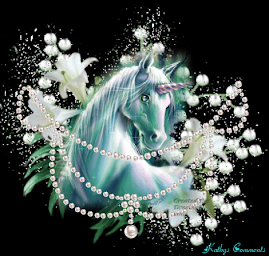


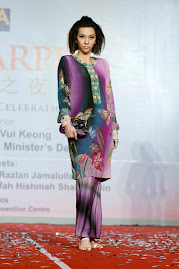


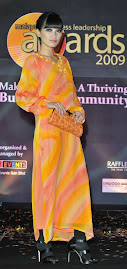








No comments:
Post a Comment